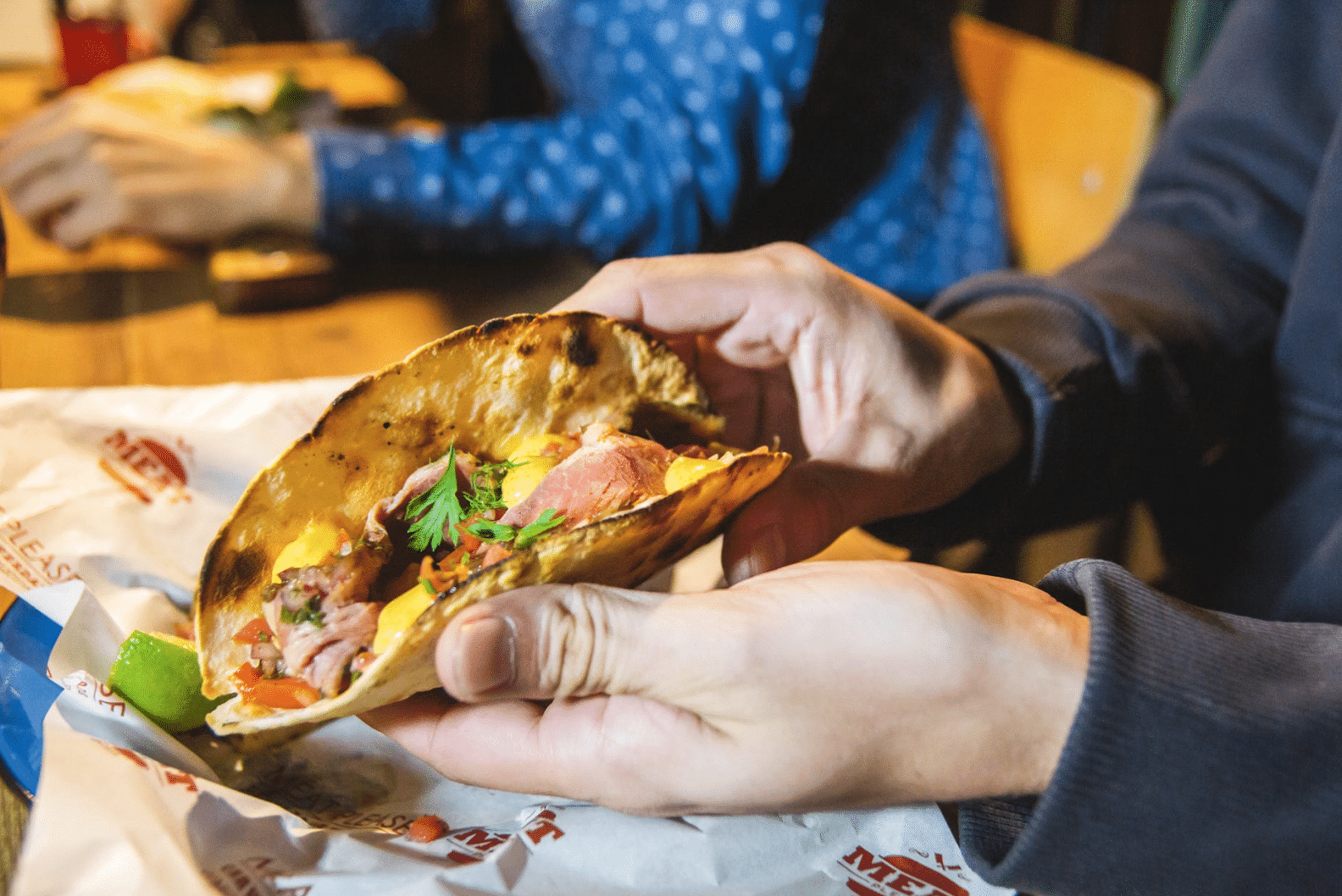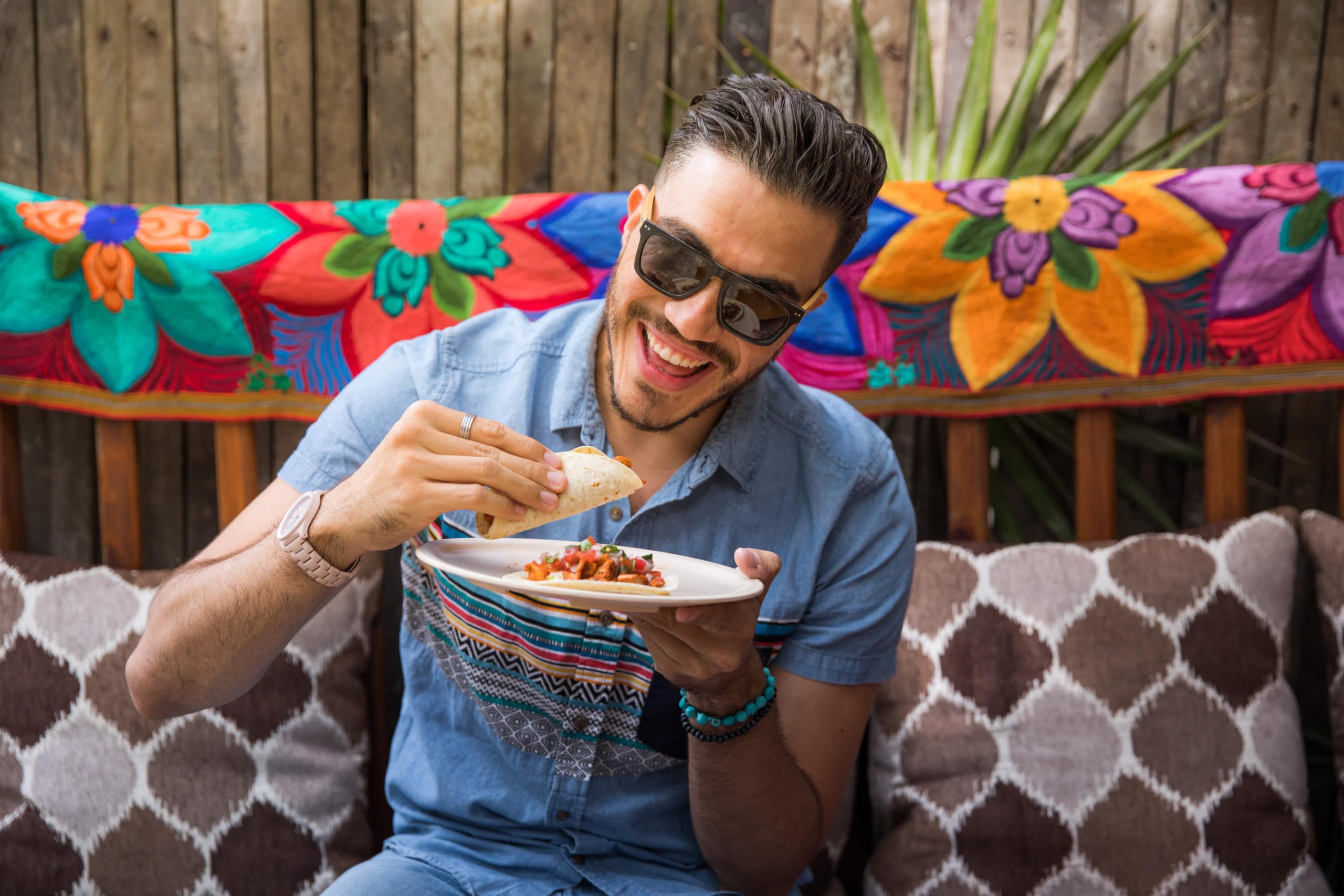Por fin! The days are flying by and your long-awaited vacation to Mexico is quickly approaching. You have your bags packed and passport ready. But there’s one crucial thing on your to-do list that still needs checked off: learn some Spanish phrases for your vacation in Mexico!
Whether you’re going to an all-inclusive resort in Cancún or camping off-the-grid in Oaxaca, having some working knowledge of the native language will surely make for a smoother trip. Not only will you be able to better understand signs and people, you’ll also be able to more genuinely connect with the locals in order to build trust, gain independence and better understand the culture. C’mon people, it can’t be all about the margaritas.
Let’s start with some basic words and helpful grammar tips that will up your speaking game a notch. We encourage you to take some notes as you read along!
General Spanish words + phrases for traveling
Directions + Places
- Where is the bathroom, the hotel, the beach?
Dónde está el baño, el hotel, la playa?
The “h” in Spanish is silent, so make sure to pronounce hotel like otel. - Go straight, left, right.
Siga recto, izquierda, derecha. - I need a taxi and a bank.
Yo necesito un taxi y un banco.
Taxi and banco look a lot like “taxi” and “bank.” Words that appear similar in two different languages are called cognates, and (lucky for us) Spanish and English are full of them. - I’m from the United States.
Yo soy de los Estados Unidos.
Restaurants + Food
- I want Mexican food tomorrow.
Yo quiero comida mexicana mañana. - Two tacos to go, please.
Dos tacos para llevar, por favor.
Try to remember that the double “l”, like in llevar, makes the “y” sound. You would pronounce llevar like yevar. - Can I pay the check with card?
Puedo pagar la cuenta con tarjeta?
Most tourist places will accept cards, but it’s never a bad idea to keep a bit of cash on hand.

Greetings + Goodbyes
- Hello, what’s up, how’s it going?
Hola, qué pasa, cómo te/le va?
Did you catch the option between te (informal) and ve (formal)? Unlike English, Spanish distinguishes between casual and formal ways of addressing someone else in conversation. Te is the reflexive pronoun of tú, the informal “you.” Ve is the reflexive pronoun of usted, the formal “you.” Read more about reflexive pronouns here. - Good morning, afternoon, evening.
Buenos días, buenas tardes, buenas noches.
Pro tip: Notice how buenos changes to buenas. That’s because Spanish is a gendered language, meaning nouns are either feminine or masculine. Depending on the word’s gender, the accompanying adjective will end in either -a or -o. Día is masculine while tarde and noche are feminine. Of course, there are always exceptions, but this is a good rule of thumb. - Goodbye, see you later, take care.
Adios or ciao, nos vemos, cuídate/cuídese.
Again, take note of how the formality of the conversation influences which word you will use. Cuídate is informal.
But remember, Spanish is a language of many rules and no one’s expecting that a vacationer has them all mastered. You will make mistakes, and that’s totally normal. The most important thing is that you don’t let the fear of messing up hold you back from having interesting conversations!
Now that you have some basics covered, let’s level up to learning some Mexican slang.
Brush up on some Mexican Slang
Nearly 500 million people worldwide are native Spanish speakers, so there’s bound to be some regional differences in the language and accent. AKA, a dialect. While the ability to ask for directions will certainly help you out, being able to recognize the local jargon will bolster your vocab and improve your cultural experience.
It’s best to pick up the lingo once you’re all settled in at your final destination, especially because the slang can change even between towns. Keep in mind, slang is best used in informal conversation. If you’re traveling to Mexico on a business trip, it may be best to leave these words in your suitcase.
Here are 10 of the most common slang words and phrases across Mexico, crowdsourced from native speakers and Spanish learners alike.
- Aguas – be careful
- A huevo – of course
- Carnal – bro, brother
- Chido – cool
- Güey – man, friend
- No manches – no way, are you kidding
- Pachanga – party
- Qué onda – what’s up
- Qué oso – how embarrassing
- Qué padre – how cool

How to practice Spanish phrases
While we think we’ve provided a pretty good starting point, we recommend doing a little more studying of your own before takeoff. Don’t worry about flashcards, because we’ve put together a comprehensive guide of learning Spanish on the go with Netflix. It doesn’t get any easier than that.
Or maybe you want your language learning process to be a bit more structured? In that case, check out polyglot Olly Richards’s Survive in Spanish course, in which he promises to cover the basics in just 14 days using his “fast mastery” approach.
Buen Viaje! Have a good trip!
With these tips and tricks, you’re more than ready to impress your travel buddies and have some simple conversations on your next trip to Mexico.
Whether you’re just starting out or want to improve your Spanish skills even further, TruFluency‘s native Spanish tutors can help. Get 20% off your first month of classes with code TF20!
Nos vemos!





